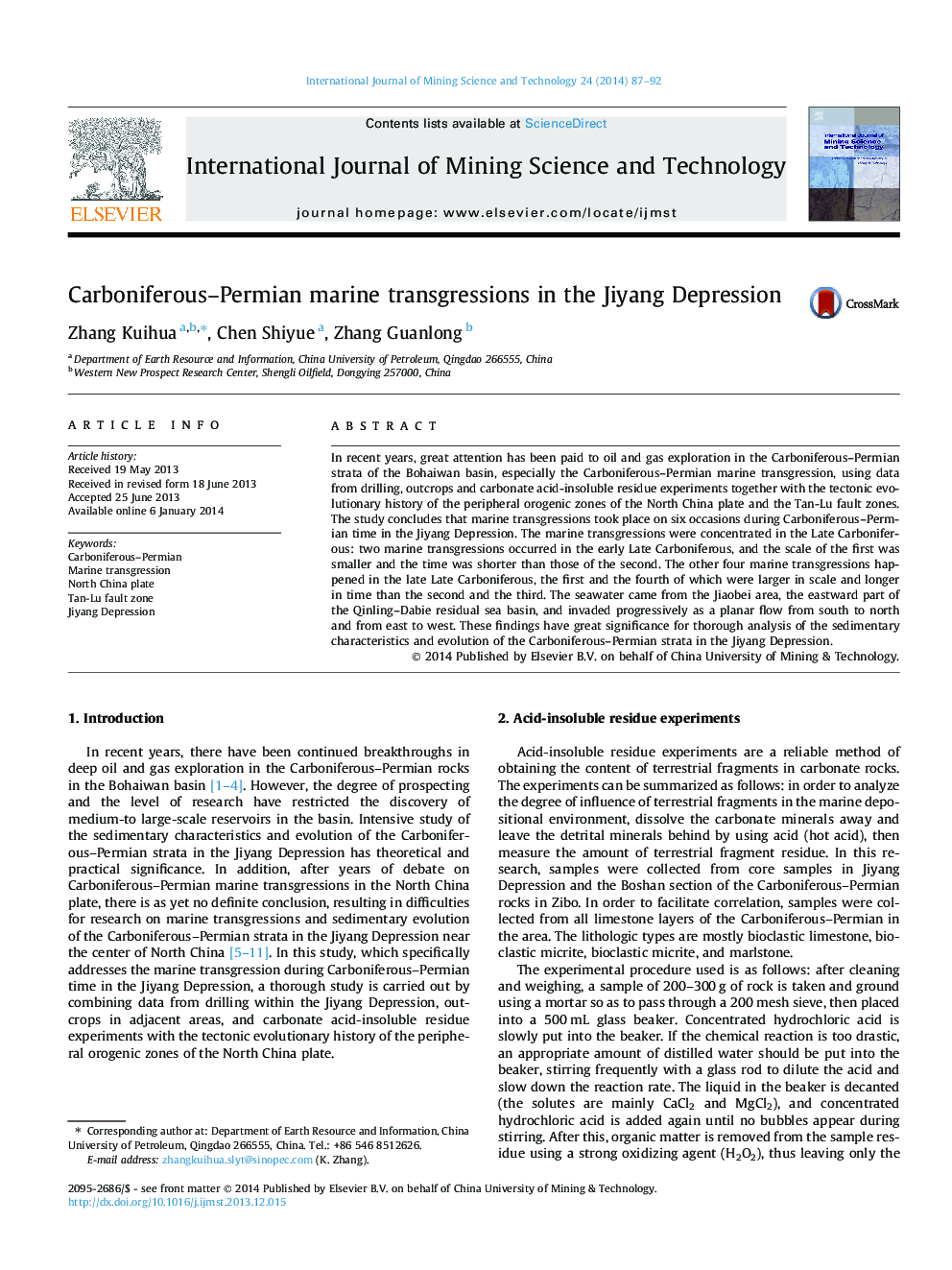| Article ID | Journal | Published Year | Pages | File Type |
|---|---|---|---|---|
| 276541 | International Journal of Mining Science and Technology | 2014 | 6 Pages |
In recent years, great attention has been paid to oil and gas exploration in the Carboniferous–Permian strata of the Bohaiwan basin, especially the Carboniferous–Permian marine transgression, using data from drilling, outcrops and carbonate acid-insoluble residue experiments together with the tectonic evolutionary history of the peripheral orogenic zones of the North China plate and the Tan-Lu fault zones. The study concludes that marine transgressions took place on six occasions during Carboniferous–Permian time in the Jiyang Depression. The marine transgressions were concentrated in the Late Carboniferous: two marine transgressions occurred in the early Late Carboniferous, and the scale of the first was smaller and the time was shorter than those of the second. The other four marine transgressions happened in the late Late Carboniferous, the first and the fourth of which were larger in scale and longer in time than the second and the third. The seawater came from the Jiaobei area, the eastward part of the Qinling–Dabie residual sea basin, and invaded progressively as a planar flow from south to north and from east to west. These findings have great significance for thorough analysis of the sedimentary characteristics and evolution of the Carboniferous–Permian strata in the Jiyang Depression.
